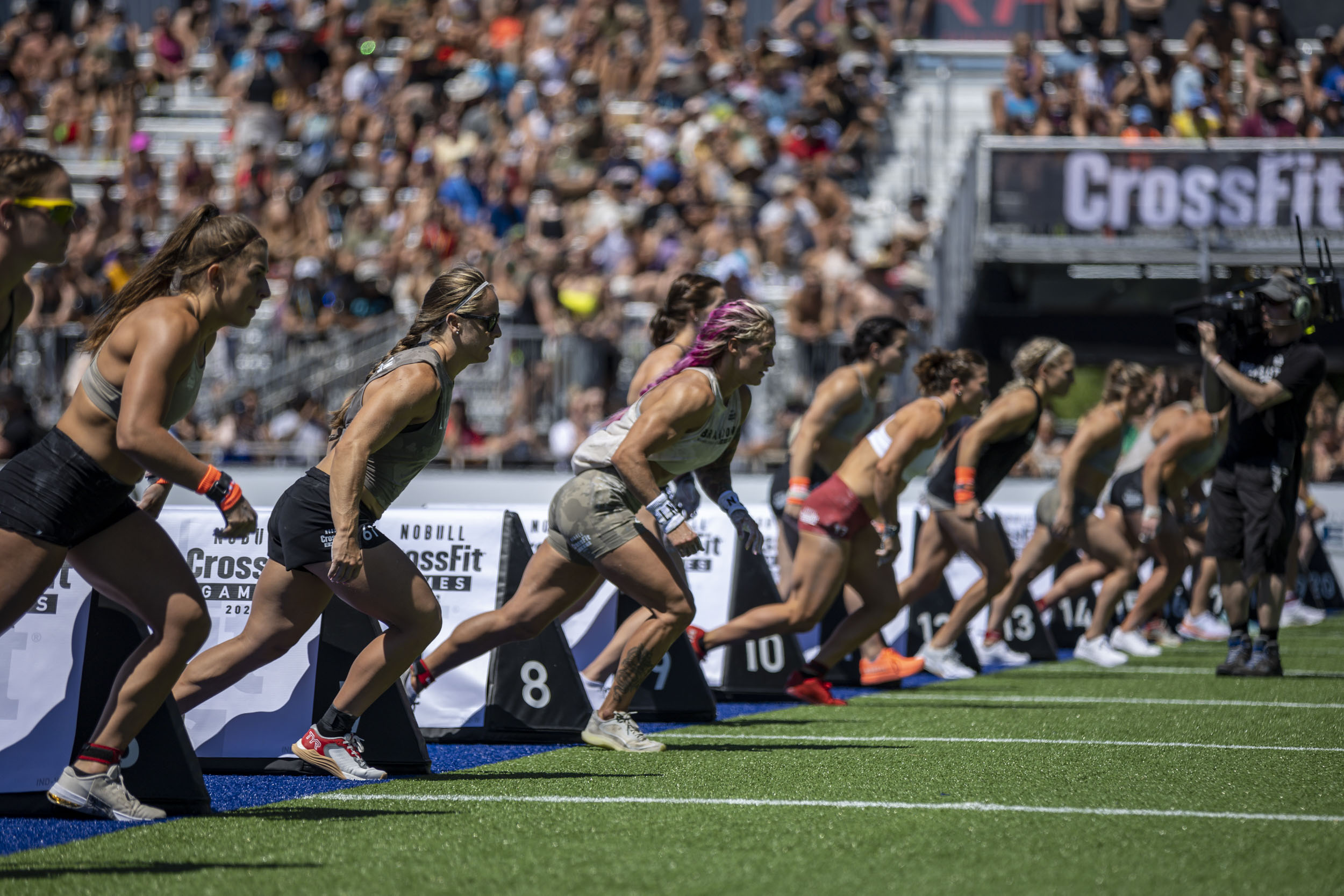The CrossFit Games and Drowning: Drowning Crossfit Games

The CrossFit Games, known for its intense and demanding events, have seen a growing number of water-based challenges. While these events add an exciting element to the competition, they also raise concerns about the potential for drowning. This article will explore the risks associated with drowning during CrossFit Games events, examine the safety protocols in place, and compare the risk to other water-based activities.
Risk of Drowning During CrossFit Games
The CrossFit Games feature various water-based events, such as swimming, rowing, and obstacle courses with water elements. These events introduce a significant risk of drowning, especially for athletes who are not strong swimmers or who may experience fatigue or exhaustion during the competition.
The risk of drowning is heightened during events that involve long-distance swimming, particularly in open water, where currents and unpredictable water conditions can pose challenges. Additionally, obstacles in the water, such as ropes or walls, can further increase the risk of accidental submersion.
Safety Protocols and Measures
To mitigate the risk of drowning, the CrossFit Games organizers implement a comprehensive set of safety protocols. These include:
- Experienced Lifeguards: Certified lifeguards are stationed throughout the water-based event areas to monitor athletes and respond to emergencies.
- Safety Boats: Rescue boats equipped with trained personnel are readily available to assist athletes in distress.
- Water Safety Training: Athletes are required to demonstrate basic swimming proficiency before participating in water-based events. Some events may also offer additional water safety training sessions.
- Clear Water Conditions: Organizers carefully select water venues with clear visibility and relatively calm water conditions to minimize the risk of accidents.
- Emergency Response Plan: A detailed emergency response plan is in place to handle any potential drowning incidents, including procedures for evacuation and medical assistance.
Comparison to Other Water-Based Activities
The risk of drowning during CrossFit Games events is comparable to other water-based activities, such as swimming, surfing, and kayaking. While the intensity and physical demands of the Games may increase the risk for some athletes, the presence of trained lifeguards and safety protocols aims to minimize the likelihood of serious incidents.
It’s important to note that the risk of drowning can vary significantly depending on factors such as the type of water activity, the individual’s swimming ability, and the environmental conditions.
Drowning Prevention Strategies in CrossFit

CrossFit is known for its intense workouts, often pushing athletes to their limits. When these workouts involve water, the risk of drowning increases significantly. This makes it crucial for CrossFit athletes to be aware of drowning prevention strategies and prioritize water safety training.
Importance of Water Safety Training for CrossFit Athletes
Water safety training is crucial for CrossFit athletes who participate in water-based workouts. It equips them with the necessary skills and knowledge to navigate aquatic environments safely. This training can significantly reduce the risk of drowning and ensure a positive and safe experience for athletes.
- Enhanced Awareness of Water Hazards: Training helps athletes identify potential hazards in the water, such as currents, uneven depths, and obstacles. This awareness enables them to make informed decisions and take appropriate precautions.
- Improved Swimming Skills: Water safety training emphasizes developing strong swimming skills, including proper stroke techniques, endurance, and rescue skills. These skills are essential for navigating water safely and effectively.
- Understanding Water Safety Principles: Training instills essential water safety principles, such as the importance of swimming with a buddy, using appropriate flotation devices, and knowing how to call for help in emergencies.
- Confidence and Preparedness: Water safety training instills confidence in athletes, knowing they have the skills and knowledge to handle unexpected situations in the water. This preparedness can significantly reduce stress and anxiety during water-based workouts.
Water Safety Training Program for CrossFit Athletes
A comprehensive water safety training program for CrossFit athletes should include the following elements:
- Basic Swimming Skills Assessment: This initial assessment evaluates athletes’ current swimming abilities, identifying areas for improvement and tailoring training accordingly.
- Stroke Technique Refinement: Focusing on proper stroke techniques for different swimming styles, such as freestyle, backstroke, and breaststroke, enhances efficiency and endurance in the water.
- Water Safety Drills: Incorporating drills that simulate real-life scenarios, such as rescuing a drowning person, treading water, and staying afloat with minimal effort, prepares athletes for potential emergencies.
- Open Water Training: Conducting training sessions in open water environments familiarizes athletes with the challenges and unpredictability of natural water bodies.
- Emergency Response Training: Teaching athletes how to recognize and respond to drowning emergencies, including CPR and first aid, equips them with the necessary skills to assist others in need.
- Buddy System Implementation: Emphasizing the importance of swimming with a buddy and establishing clear communication protocols for emergencies enhances safety during water-based workouts.
Drowning Prevention Strategies
CrossFit athletes can implement several strategies to minimize the risk of drowning during water-based workouts:
- Always Swim with a Buddy: Having a partner present during water workouts ensures someone is always available to assist in case of an emergency.
- Never Swim Alone: This is a crucial safety measure, especially in open water or unfamiliar environments. Always have a buddy or designated lifeguard present.
- Avoid Alcohol and Drugs: These substances impair judgment and coordination, significantly increasing the risk of drowning.
- Know Your Limits: Don’t attempt workouts beyond your current swimming abilities. Start with manageable challenges and gradually increase the intensity as your skills improve.
- Use Appropriate Flotation Devices: Depending on the workout, using flotation devices like life jackets or pull buoys can provide additional safety and support in the water.
- Be Aware of Water Conditions: Before entering the water, assess the current, depth, and visibility to ensure safe swimming conditions.
- Learn CPR and First Aid: Knowing how to administer CPR and first aid in case of an emergency can be life-saving.
The Impact of Drowning on the CrossFit Community

The CrossFit community, known for its intense workouts and supportive atmosphere, has unfortunately experienced the devastating impact of drowning incidents. These events have shaken the community, highlighting the importance of water safety and leaving a lasting mark on athletes, coaches, and families.
The Emotional and Psychological Effects
The emotional and psychological effects of drowning incidents on the CrossFit community are profound and multifaceted. Athletes who have witnessed or experienced a drowning event may struggle with trauma, anxiety, and fear of water. Coaches may feel a sense of responsibility and guilt, questioning their ability to protect their athletes. Families of victims often experience grief, loss, and a sense of disbelief.
“The loss of a loved one to drowning is a tragedy that can have a lasting impact on individuals and families. It is important to remember that there is no shame in seeking support and resources to cope with the emotional and psychological effects of such an event.”
How Drowning Incidents Have Shaped the Community’s Approach to Water Safety, Drowning crossfit games
Drowning incidents have spurred the CrossFit community to prioritize water safety education and awareness. Many CrossFit gyms now offer water safety courses and incorporate water safety drills into their training programs. The community has also become more proactive in advocating for safe swimming practices and promoting awareness of drowning risks.
“The CrossFit community has learned from these tragic events and has taken steps to improve water safety awareness and practices. This commitment to safety is a testament to the community’s strength and resilience.”